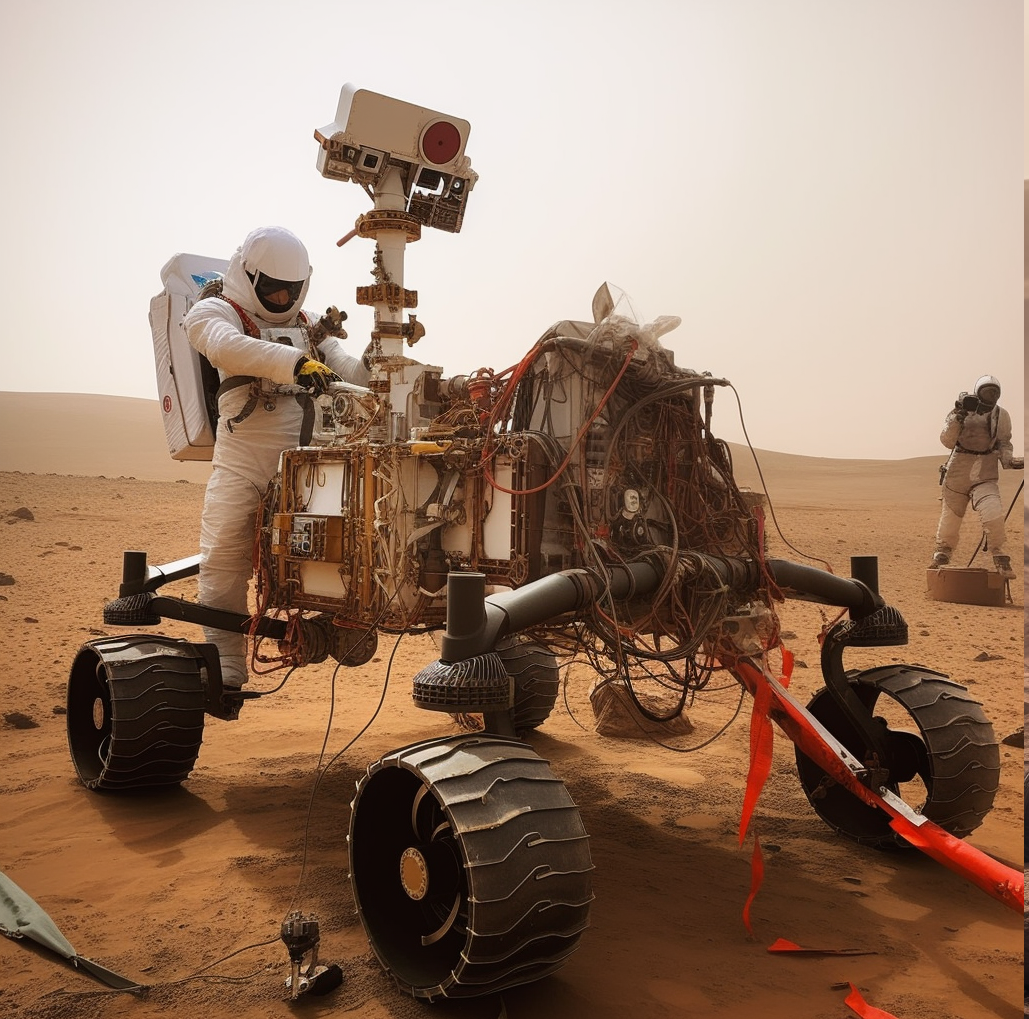In this captivating image presented by the AI4Mars initiative, NASA’s Perseverance rover’s mechanical appendage comes into view. This image is integral to a project aimed at harnessing artificial intelligence for the betterment of Mars exploration. Within this initiative, users are tasked with outlining and identifying various geological and topographical features, contributing to the training of an AI algorithm. This algorithm, once refined, will significantly enhance the capabilities of Mars rovers. (Image credit: NASA)
The tantalizing question emerges: Can machines discern the presence of life on extraterrestrial worlds? Surprisingly, they have already embarked on this endeavor to a certain extent.
Orbiting spacecraft come equipped with sensors that possess the remarkable ability to detect molecules that could signify the existence of alien life forms. However, an enigmatic challenge looms—the organic molecules that hint at intriguing biological processes tend to deteriorate over time, rendering them elusive to contemporary technology.
But here comes a breakthrough—a freshly devised approach rooted in the realm of artificial intelligence (AI) has surfaced. This method demonstrates an uncanny knack for discerning subtle deviations in molecular patterns that serve as telltale signs of biological activity. Astonishingly, this mechanism yields results with an impressive 90% accuracy, as reported in recent research findings.
In the grand tapestry of future space exploration, this AI innovation could potentially find a permanent home within the sensors of robotic explorers. These sophisticated sensors could grace lunar and Martian landers and rovers, as well as spacecraft orbiting celestial bodies with potential habitability, such as Enceladus and Europa.
Robert Hazen, a distinguished scientist hailing from the Carnegie Institution for Science in Washington D.C. and co-author of this groundbreaking study, shared his insights: “Our journey commenced with the fundamental notion that the chemistry underpinning life is fundamentally distinct from that governing inanimate matter. There exist what we can term ‘chemical doctrines of life’ that exert their influence on the assortment and dissemination of biomolecules. If we can decipher these doctrines, we possess the tools to steer our endeavors, whether it be modeling the origins of life or detecting subtle life indicators on foreign terrains.”
The novel approach hinges upon the fundamental premise that the chemical processes governing the formation and functionality of biomolecules are inherently disparate from those presiding over abiotic molecules. Biomolecules, exemplified by amino acids, retain a trace of the chemical processes responsible for their creation. Remarkably, this principle is poised to extend to extraterrestrial life forms, as postulated by this pioneering study.
On any celestial body, life may manifest by harnessing a select cadre of compounds in abundance to facilitate its daily functions. This crucial divergence sets them apart from lifeless systems—an insight that AI technology can exploit, as elucidated by the researchers.
To nurture the AI’s proficiency, the research team embarked on rigorous training, utilizing a dataset comprising 134 samples, encompassing 59 of biotic origin and 75 abiotic. Subsequently, the data was randomly partitioned into training and testing sets for validation purposes. The AI model adeptly distinguished biotic samples derived from organic entities like shells, teeth, bones, rice, and even human hair. Remarkably, it also pinpointed traces of ancient life preserved within specific fossilized remnants, including coal, oil, and amber.
The AI tool further extended its prowess by successfully identifying abiotic samples, encompassing synthetic compounds like laboratory-generated amino acids and carbon-rich meteorites. These findings open a treasure trove of opportunities for scientific exploration.
In a remarkable feat, this newfound AI capability is already poised to investigate the 3.5 billion-year-old rocks residing in Western Australia’s Pilbara region. These ancient rocks, discovered in 1993, were initially hailed as fossilized remnants of microorganisms reminiscent of cyanobacteria—pioneers in oxygen production on Earth. If these findings prove conclusive, they could potentially reshape our understanding of the Earth’s early history, suggesting a hospitable environment for life far earlier than previously conceived. Nonetheless, these claims have been met with skepticism, with numerous studies positing alternative geological explanations. The advent of AI promises to offer clarity in this enduring scientific mystery.
This groundbreaking research is meticulously detailed in a paper published on Monday, September 25th, in the esteemed journal Proceedings of the National Academy of Sciences.










Leave a Reply